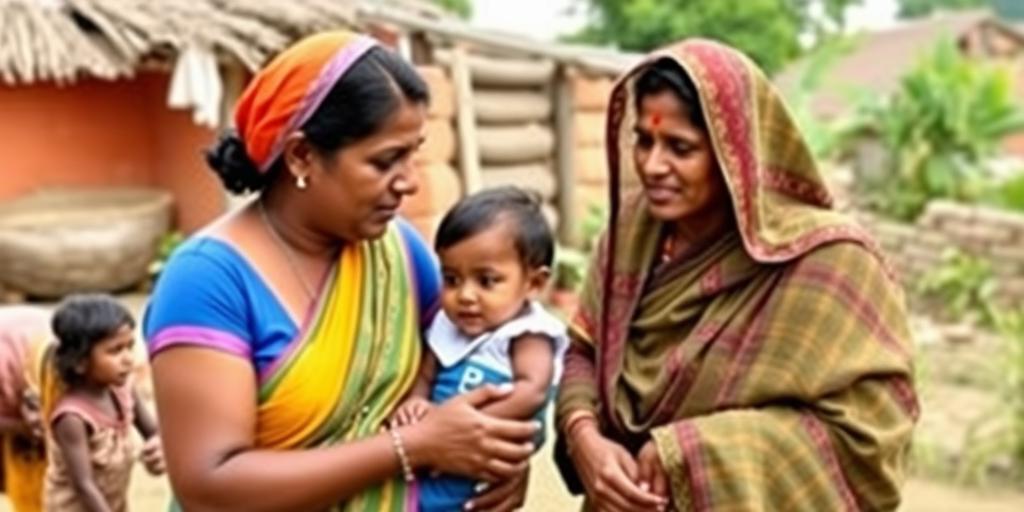The Role of ASHA Workers in India’s 2025 Health Goals
India’s ambitious health goals for 2025 hinge significantly on the dedication and effectiveness of its ASHA (Accredited Social Health Activist) workers. These community health workers are at the forefront of delivering essential healthcare services to the most vulnerable populations, particularly in rural and underserved areas. This article delves into the multifaceted role of ASHA workers, their impact on key health indicators, and the challenges they face in achieving India’s healthcare vision.
What are ASHA Workers?
ASHA workers are community health volunteers selected from their own communities. They undergo training to act as health educators, promoters, and facilitators. As a crucial link between the public health system and the community, ASHAs are primarily women and are accountable to the village panchayat.
Key Responsibilities of ASHA Workers
- Health Awareness: ASHAs play a pivotal role in creating awareness about health determinants such as nutrition, hygiene, and sanitation. They educate communities on preventive healthcare measures and healthy lifestyle practices.
- Service Delivery: They provide basic medical care for common ailments and ensure that essential drugs are available at the community level. ASHAs also assist in immunization drives, antenatal check-ups, and postnatal care.
- Referral Services: ASHAs identify and refer individuals with health issues to appropriate healthcare facilities. They facilitate access to services such as family planning, safe delivery, and treatment for infectious diseases.
- Data Collection and Reporting: ASHAs collect and report vital health data, which is crucial for monitoring health trends and planning effective interventions. This data helps in tracking progress towards national health goals.
Impact on India’s Health Indicators
ASHA workers have significantly contributed to improving several key health indicators in India:
- Reduced Maternal and Infant Mortality: By promoting institutional deliveries and providing postnatal care, ASHAs have helped reduce maternal and infant mortality rates, bringing India closer to its Sustainable Development Goals (SDGs).
- Improved Immunization Coverage: ASHAs play a vital role in ensuring that children receive timely vaccinations, thus preventing vaccine-preventable diseases. Their efforts have led to increased immunization coverage across the country.
- Control of Communicable Diseases: ASHAs are instrumental in the control and prevention of communicable diseases such as tuberculosis, malaria, and HIV/AIDS. They educate communities on prevention strategies and ensure timely diagnosis and treatment.
- Enhanced Access to Healthcare: By bridging the gap between communities and healthcare facilities, ASHAs have improved access to healthcare services, particularly for marginalized populations.
Challenges Faced by ASHA Workers
Despite their significant contributions, ASHA workers face numerous challenges:
- Inadequate Compensation: ASHAs are primarily volunteers and receive performance-based incentives, which are often insufficient and irregular. This can affect their motivation and commitment.
- Heavy Workload: ASHAs are responsible for a wide range of tasks, which can be overwhelming. The heavy workload, combined with limited resources, can lead to burnout.
- Lack of Training and Support: While ASHAs receive initial training, ongoing training and supportive supervision are often lacking. This can limit their ability to perform their duties effectively.
- Social and Cultural Barriers: ASHAs often face social and cultural barriers, particularly in conservative communities. These barriers can hinder their ability to promote health awareness and access to healthcare services.
Strategies to Strengthen the ASHA Program
To maximize the impact of ASHA workers and achieve India’s 2025 health goals, the following strategies are essential:
- Increased Compensation and Incentives: Providing adequate and timely compensation can improve the motivation and retention of ASHA workers.
- Enhanced Training and Capacity Building: Regular training and capacity-building programs can equip ASHAs with the knowledge and skills needed to perform their duties effectively.
- Strengthened Support and Supervision: Supportive supervision can help ASHAs overcome challenges and improve their performance.
- Community Engagement: Engaging communities in the planning and implementation of health programs can enhance the effectiveness of ASHA workers.
- Use of Technology: Leveraging technology can streamline data collection, reporting, and communication, reducing the workload of ASHA workers.
Conclusion
ASHA workers are the backbone of India’s primary healthcare system, playing a critical role in achieving the country’s 2025 health goals. By addressing the challenges they face and implementing strategies to strengthen the ASHA program, India can harness the full potential of these community health workers and improve the health and well-being of its population. Their dedication and hard work are essential to realizing India’s vision of health for all.
